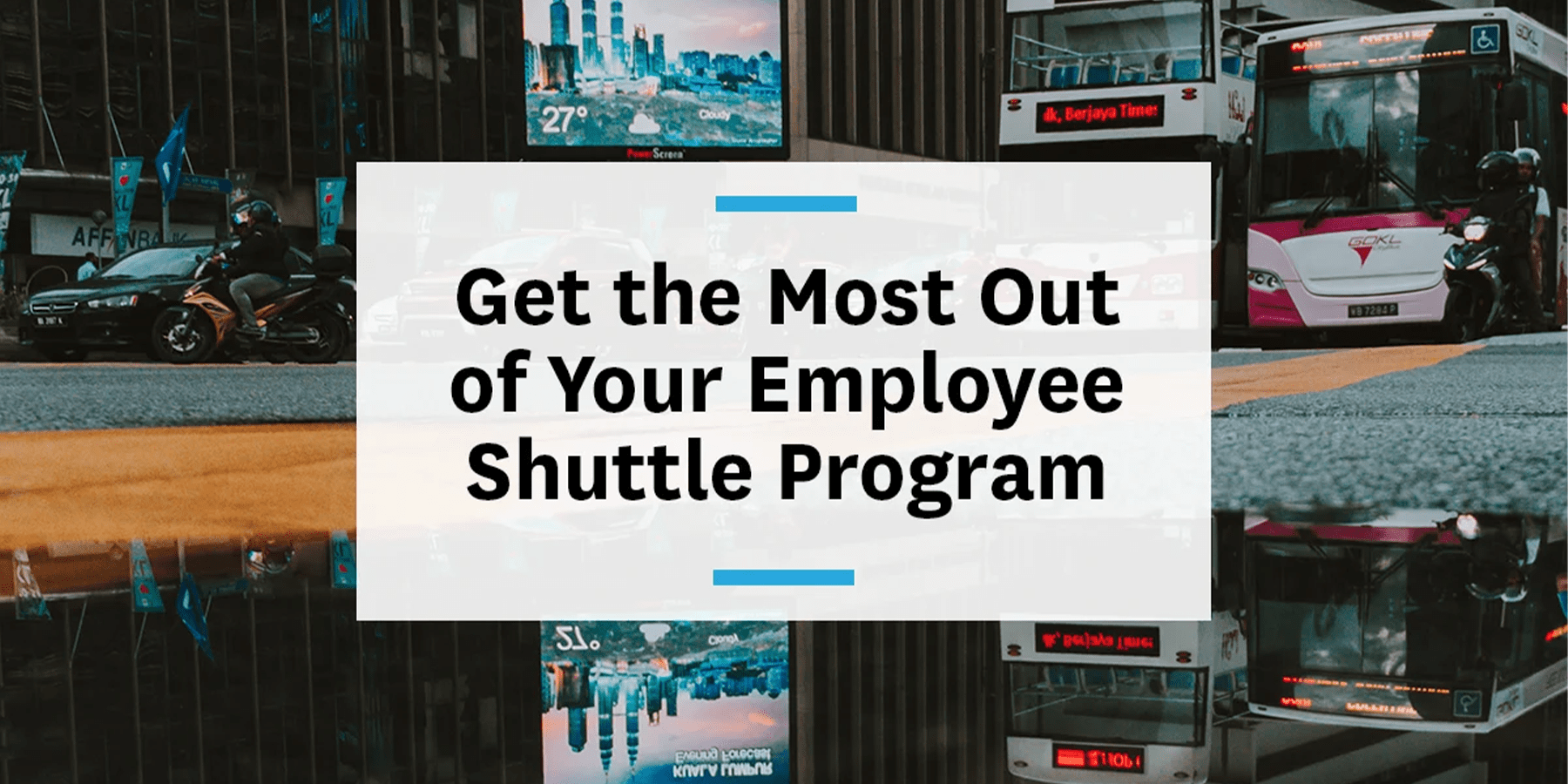Providing a private shuttle program can significantly improve your employees’ way of life during the week. Relieving the stress of employee commutes can be the difference between keeping or losing top talent. Nearly a quarter of employees leave their jobs because of dreadful commutes and it’s up to employers to help.

It’s one thing to provide a shuttle service for your employees, but when you’re not maximizing its impact, is it really worth it? If it’s being used to get employees to and from the office only, the total ridership might be lower than if it’s being used to shuttle employees to and from transit stations.
When and where
One of the most important pieces of providing a corporate shuttle is providing accurate and real-time information to your employees. Even if the shuttle runs on a set schedule, obstacles and roadblocks can cause delays – it’s just the way the world works. By providing real-time information about the shuttle’s arrival times and routes, you can ensure employees arrive where they need to be, when they need to be there, with no worry.
Knowing how to implement this information can be challenging, especially if you already have an existing shuttle program in place. Companies like TransLoc, TripShot, and Ride Systems all provide the ability to track where shuttles are, display active routes, and offer easy to use apps. We would be remiss if we didn’t mention that we integrate with all three of these companies. Access to real-time shuttle information goes beyond just giving employees more time to get to their shuttle, it gives them time back to finish their last task of the day.
Always improving
Setting up your shuttle program isn’t a one-and-done effort. Companies grow, change, and sometimes move – and your employees do the same. Employees – especially the younger workforce – are changing where they live on an annual basis. It’s important that you’re adapting your services and shuttle lines to keep up with the shift in employee geography. Establishing new lines, adding stops, or increasing shuttle frequency will ensure a majority of your workforce is covered.
Accommodating everyone taking the shuttle is nearly impossible, but certain measures can be taken to ensure ridership increases. Setting a central meeting point(s) for employees to get on the shuttle can reach employees who may not have been able to easily take the shuttle otherwise.
Although the ridership rate is a major unit of measurement to determine the success of your shuttle program, it shouldn’t be the only goal you focus on. Rider satisfaction is an important area of focus when providing employees with this benefit. Adding features to your shuttles like WiFi allows employees to take full advantage of their commutes. Whether they want to get work done or use this time for personal use, giving employees the ability to spend their time efficiently on the way to work can lead to increased ridership and productivity. The point of providing alternate commuting options is to get your workforce out of their cars – so why not make it the best experience possible?
It’s not stealing
They say imitation is the most sincere form of flattery – that holds true for corporate shuttle programs as well. Big companies like Facebook and Google provide very robust shuttle services for their employees. Their shuttles run all day, everyday, making it so their employees never have to worry when the next one is leaving. In an ideal world, every company would provide shuttle services that are identical to Google or Facebook. Although that isn’t possible, taking pieces and parts of their programs – like on-shuttle WiFi, bike racks, and text updates about delays – is a great starting point.
Organizations that run effective shuttles services – that aren’t Google and Facebook – are the World Bank in Washington, DC, and AthenaHealth in Watertown, MA.
The World Bank uses their company shuttles to get employees between buildings during the workday. This eliminates the time employees would spend waiting at a bus stop or on the metro platform. They also use their shuttles at the end of the day to get employees to transit stops throughout the city.
AthenaHealth runs their shuttle in a similar manner. Their shuttle will transport employees to and from their preferred transit stations. To ensure employees are getting on the right shuttle, to the right transit stop, at the right time, AthenaHealth displays that information on TransitScreens in their office.
The end of the line
The success of a shuttle service is largely dependent on the effort to make it the most effective it can be. Treating it as a one-and-done project means it will run ineffectively. Always improving, updating and adapting will ensure ridership stays up and employees are happy to take it. The only way to improve your shuttle service is to get one started – so what are you waiting for?




